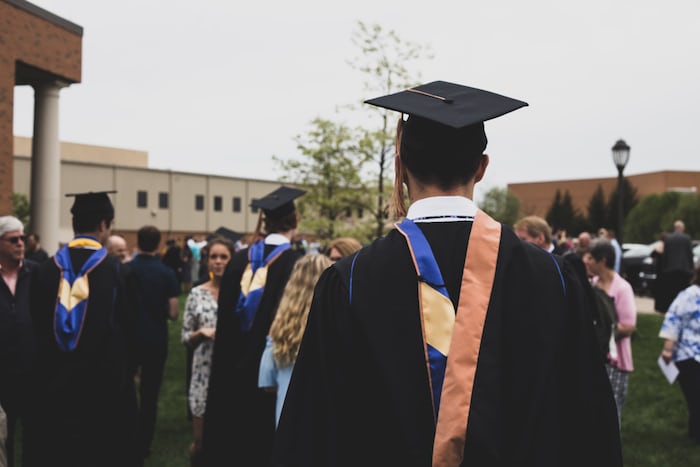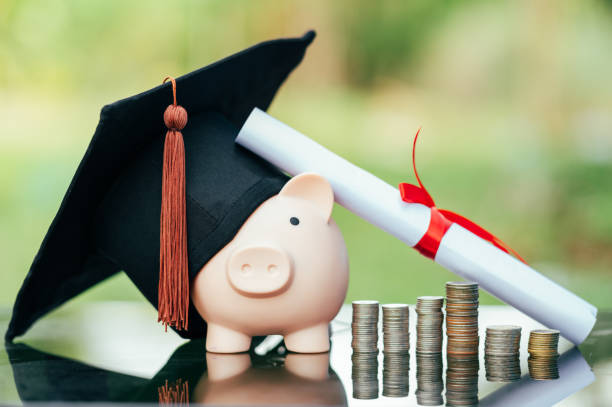15 Clear-Cut Ways to Cut Down on Student Loans
There is no question that the cost of higher education has been on the rise in recent years. As a result, more and more students are taking out loans to finance their education. According to the latest investigation, the average student loan debt is over $37,000.
While there is no easy way to eliminate student loan debt, there are some ways to cut down on the amount you have to borrow. For example, you can start by looking for scholarships and grants that can help cover the cost of tuition. You can also look into student loan programs that offer lower interest rates or have more favourable repayment terms.
In this article, we will share 15 ways that you can cut down on (or even eliminate) your student loan debt. We hope that this information will help you make the best decision for your financial future!
Federal Student Loans:
Federal student loans are provided by the government to help students pay for education. These loans are available to undergraduate and graduate students and come with many benefits, such as low-interest rates and flexible repayment options.
If you want to take out a federal student loan, you should know a few things. First, you must fill out a Free Application for Federal Student Aid (FAFSA) form to qualify for these loans. Additionally, you should be aware that there are two types of federal student loans: subsidized and unsubsidized.
Subsidized loans are need-based, meaning that the government will pay the interest on the loan while you are in school. Unsubsidized loans are not need-based, so you will be responsible for paying the interest.
Private Student Loans
Assuming you don’t qualify for any forgiveness program, your next best strategy is to cut down your monthly payments by refinancing your student loans. You’ll receive a new loan with a lower interest rate on refinancing. That will help you save money over the life of your loan, and it will make your monthly payments more manageable.
You can refinance your student loans through a private lender. Several private lenders offer student loan refinancing with different terms and conditions. It’s important to compare multiple lenders before choosing one, as you’ll want to find the lender that offers the best conditions for your situation.
Refinancing Your Student Loans:
Refinancing your student loans is one of the best ways to reduce your monthly payments. By refinancing, you will be able to get a lower interest rate and extend the term of your loan, which can make a big difference in your monthly payment. You can also consolidate your loans, which can also help lower your monthly payments.
There are many ways to cut your student loan debt, but refinancing is one of the best. If you can get a lower interest rate and extend the term of your loan, you will be able to save a lot of money each month. Many different refinancing options are available, so shop around and find the best one for you.
Student Loan Consolidation
There are many ways to cut back the money you owe on student loans. One way is to consolidate your loans into one payment. That can be a great way to save money on interest and reduce the amount you owe each month. Another way to reduce the amount of money you owe is to refinance your loans.
It can be a great way to save money on interest and lower your monthly payments. You can also make extra payments on your loans, which can help you pay off your debt more quickly. Whatever method you choose, make sure you are aware of the pros and cons before you make a decision.
Student Loan Repayment Assistance Programs
As college costs continue to rise, so does the debt students take to pay for their education. According to the Institute for College Access and Success, the average student loan debt among graduates of the class of 2017 was $28,650.
If you struggle to repay your student loans, you’re not alone. There are some methods through which you can get assistence. These repayment assistance programs offer assistance with your monthly payments, and some will even forgive your loans after a certain number of years.
If you’re struggling to repay your student loans, repayment assistance programs can offer some help. These programs can assist with making your monthly payments and sometimes even forgive your loans after a few years. To learn more about these programs and how to take advantage of them, research repayment assistance programs etc.
Public Service Loan Forgiveness:
There are several ways to cut down on student loan debt, and one is public service loan forgiveness. This program helps those working in public service jobs get their loans forgiven after ten years of payments. Do you have a public service job and struggle to make student loan payments? Public service loan forgiveness could work well for you.
To be eligible for public service loan forgiveness, you must make 120 monthly payments on your student loans while working full-time in a public service job. After ten years of payments, the remaining balance on your loan will be forgiven. This program can be a great way to get out of student loan debt, but it’s important to remember that you’ll still need to make all of your payments on time to qualify.
Loan Discharge or Cancellation:
There are a few ways that you can get rid of your student loans without having to pay them back. One method is to get your loans discharged. That can happen if you become totally and permanently disabled, die, or your school closes before you finish your program. You can also have your loans cancelled if you’re a victim of identity theft or if you’re a victim of certain types of fraud.
Another way to get rid of your student loans is to have them forgiven. That can happen if you work in a public service job for a certain amount of time or make payments for a certain number of years.
If you struggle to make your student loan payments, you may be able to get a deferment or forbearance. That means that you can temporarily stop making payments or reduce them.
Military Deferment or Forbearance:
There are several ways to ease up on the amount of student loan debt you must repay. One way is to take advantage of the military deferment or forbearance options. If you are part of the military, you can defer your loans for some time while on active duty. You can also forbear your loans, which means you can temporarily stop making payments on your loans.
Hardship Deferment:
If you are struggling to make your student loan payments, you may be able to get a hardship deferment. This type of deferment allows you to temporarily stop making payments on your loans if you are experiencing financial hardship.
To qualify for a hardship deferment, you must contact your loan servicer and explain your situation. If you are approved for a deferment, you will not have to make any payments on your loans for a specified period. Interest will continue to accrue on your loans during this time, but you will not have to make any payments.
If you are having trouble making your student loan payments, a hardship deferment may be a good option. Be sure to contact your loan servicer to see if you qualify.
Income-Driven Repayment Plans:
If you find it hard to make student loan payments, you’re not the only one. Millions of Americans are struggling to pay off their student loans, and the problem is only worsening.
One way to make your student loan payments more manageable is to enrol in an income-driven repayment plan. These plans base your monthly payments on your income and family size, which can make it more affordable. You may also be eligible for loan forgiveness after 20-25 years with the income-driven repayment plan.
If you are battling your way into paying student loans, consider income-driven plans for repayment. Be sure to do your research to find the plan that best suits your needs.
Loan Rehabilitation:
If you feel you will never get out of your student loan debt, know that you are not alone. According to the most recent data from the Federal Reserve, the average graduate has nearly $40,000 in student loan debt. And with interest rates on the rise, it’s only going to get harder to make those monthly payments.
But there is good news. You can apply for loan rehabilitation and put an end to your struggle. Loan rehabilitation is a program that can help you get back on track with your payments and get your loan out of default.
Under the loan rehabilitation program, you make nine monthly payments equal to at least 15% of your monthly income. Once you pay all nine, your loan is no longer in default, and you get back on track with payments.
Default:
There are many ways to cut down on student loan debt, but one of the most effective methods is to default on your loans. By default on your loans, you can significantly reduce the amount of money you owe. That will also help you avoid accruing any additional interest on your loans.
While defaulting on your loans may seem drastic, it is often the best way to reduce your debt. If it’s hard to make your payments, you should speak to your loan servicer about your options. They may help you find a way to stay on track with your payments.
Bankruptcy:
Many Americans carry the burden of student loan debt. Student loan debt is now the second-largest type of debt in the United States, behind only mortgage debt.
If repaying student loans is hard for you, you may consider bankruptcy. While bankruptcy can be a way to get rid of some of your debt, it’s crucial to know that it’s not a cure-all.
The Costs and Benefits of Getting Student Loans
There are both costs and benefits to taking out student loans. On the one hand, loans can help you finance your education and make it more affordable. On the other hand, loans can also put you in debt and cause you to pay more for your education in the long run.
A great benefit of student loans is that they can help you afford your education. If you can not attend college without loans, taking loans can be a good investment. Loans can also help you pay for other expenses related to your education, like textbooks and housing.
The downside of student loans is that they can put you in debt. You’ll have to repay your loans, plus interest after you graduate. It can cause financial problems for you down the road. If you’re not careful, you could end up paying more for your education than you would have if you hadn’t taken out loans.
Before you take out student loans, it’s essential to weigh the costs and benefits. Think about how much you’ll need to borrow and whether you’ll be able to afford your payments after you graduate. If you’re unsure, it’s a good idea to speak with a financial advisor.
Final Words:
Student loan debt is a huge issue in the United States. According to recent reports, the average graduate has nearly $30,000 in student loan debt. It is a burden for many people, and makes it difficult to afford other things, like a house or a car.
There are a few ways to cut down on student loan debt. One way is to take advantage of private student loans. The government does not back private student loans. It means they usually have lower interest rates and more flexible repayment terms.
Another way to reduce student loan debt is to attend a community college for two years before transferring to a four-year school. It can save you a lot of money on tuition and other costs. Finally, you can try to get scholarships and grants to help pay for school.







